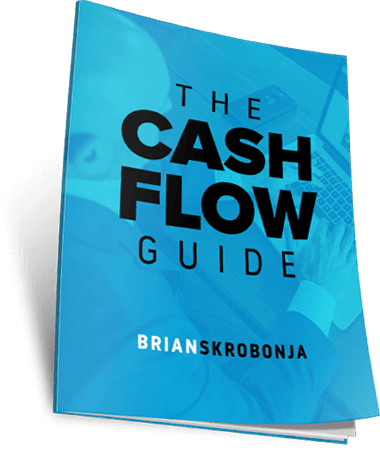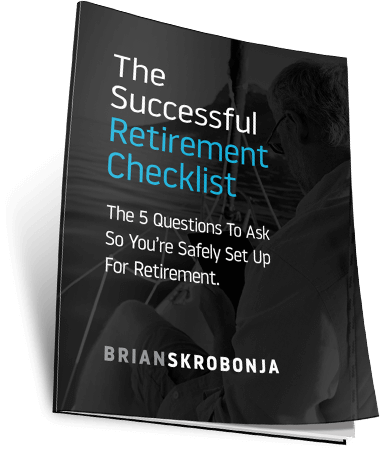Success is the result of follow a plan to fruition. Once the plan is fulfilled, the result is success and the more specific the plan is the higher the probability is for reaching the goal.
See if you can relate to this…You have contributed to a 401k or some employer sponsored account at work, maybe you’re paying extra on the mortgage or have already paid it off, you keep cash on hand for those unexpected expenses or upcoming big-ticket purchases and you often wish there was a way to pay less in taxes.
You have worked for thirty or forty years and are at or approaching social security eligibility and are now looking at when to take social security to maximize the benefits.
Sound familiar? Now, here’s what often comes next… You look at the account statements and begin to wonder whether or not the investments you have are the right ones to own for where you are in life. You begin weighing your options for making withdrawals from your retirement accounts. You aren’t sure exactly how this is done whiling feeling a sense of uncertainty about the risk of the stock market and the possibility of running out of money.
And then it happens, you begin searching the internet in search for answers. After a lot of searching and reading you realize that there are just too many opinions to choose from and resort to simply eliminating options that you’re not as familiar with or have heard negative things about. Then you take what’s left and try to put together a coherent strategy while continuing a search to find information that supports what you have contrived.
If this sounds anything like where you are just know that this is an all-too-common situation with some variations of course but the circumstances are real. Maybe this is exactly where you are or perhaps it describes something similar but either way, you wouldn’t be reading this far into the article without some truth to what I am describing.
Regardless of the exact details, what you do next is critical to your long-term success. The decisions that you make will determine the trajectory of your financial future and underscores the importance of having a good plan to follow.
So, what can you do and how will you know when you can retire?
There is a lot to this if done correctly and at some point, your you’re probably going to want some professional help but there are a few things you can do yourself to get you moving in the right direction.
The first thing you can do is take A Retirement Readiness Quiz:
A quiz is a useful tool to measure your level of understanding about a topic or your readiness for progressing toward something. You can visit brianskrobonja.com/retirement readiness scorecard to access the quiz for free to help you figure out how ready you are for retirement.
The next thing to do is Calculate Your Income Need:
Before you jump in and begin picking from the assorted list of investments that you found on the internet or broker said was a good option; you should understand that this is the very last step in the process. You would be well advised to set all of that aside for now and begin with your income needs. You cannot side step this because you have to know this figure before you can do anything else.
To do this right, work through and total up all your bank payments, then your insurance payments, then your tax payments, then your monthly living expense and don’t forget the irregular expenses throughout the year. You want to be able to know how much money you spend over the course of a year.
Another point to make here, realize that this is for when you are retired – not while you’re working. Things are going to look different for you in retirement so be sure to think about how you will be spending your time in retirement. You’ll have a lot of time to fill!
Then you will want to figure out Your Income Gap:
Once you have this figure, subtract from it your social security or pension benefits. Any fixed income you have coming is already solved for so we have to figure out what your “Income Gap” is between what you need and what income you already have coming in.
And the next step would be to Identify How Much of your Investments are needed to be designated for retirement income:
So, the amount you have determined as your income gap needs to be annualized and divided by the amount of retirement assets you have designated for retirement. This calculation will tell you what yield you need to from your investments. This figure shouldn’t be more than between 4-5% at the most. If it is higher, then you may not be ready for retirement just yet.
Remember that there is inflation in your future that you will need to account for on top of market volatility, health care expenses, amongst other things that will require an ever-increasing income need. If you stretch your resources too far right out of the gate, you’re just setting yourself up for failure. This is no time to be overly optimistic with your calculations and will want to lean on the side of caution.
Another important factor to consider is Inflation:
The income gap amount you came up with a moment ago will need to be hedged from the future effects of inflation. The amount of money you need today will be greater in the future simply due to the price of goods and services increasing over time.
By using a historical figure for inflation of 3.5%, we can estimate that in fifteen years your income will depreciate by sixty eight percent. So, you have to consider this headwind in your calculations and realize that you need two pools of retirement assets, one for income now and another for income later.
The secret sauce to this is then Find Income Producing Assets:
When you’re looking to fill your income gap, the obvious solution is to generate more income to fill it. How this is done can vary from person to person but the primary outcome you’re looking for is income regardless of how you go about it.
If you’re wanting to remain active, you can consider taking on a part time job, start or buy a business, acquire some rental properties or work another full-time job that you enjoy.
If you prefer not to work and want passive income, then you’re going to have to rely on income-oriented investments to generate the income you need. This would be through specific types of income annuities or select alternative investments that are designed specifically for income.
Now a word of caution here, please be sure you are working with a qualified professional who is properly licensed and who can education you on your options. You access an article I wrote for Kiplinger magazine where I discuss this topic in length. I will post the link in the show notes.
I created a checklist you can access for free at brianskrobonja.com to give you something to work off of to help you through all of this and help increase your probability for a successful retirement. I encourage you to formulate a plan that articulates where you are, where you’re going and what needs to be done to start receiving the income you need.







